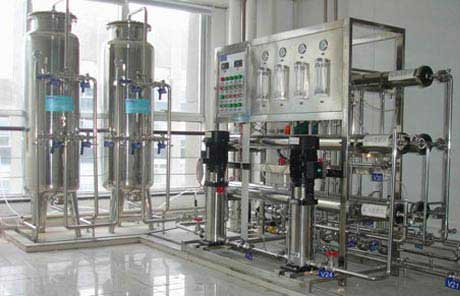As new diseases come and go, companies in the pharmaceutical industry are not just manufacturing new medicine, but also making sure that there’s enough medicine to keep up with the demand. While it may seem like a straightforward goal, actually achieving it can be a daunting task.
The ever-present need for good medicine means companies without an effective means to keep their production up could lead to great losses. Inefficient production could result in facilities shutting down, in drug developers sacrificing R&D to cut down costs, or even entire companies being sold or going bankrupt. Thankfully, companies today have better chances of succeeding thanks to robots and automation.

Robots: Beyond Basic Automation
While automating processes is a fairly standard thing for companies in the pharmaceutical industry, the level of automation is often limited to simple tasks. Lack of experience with more advanced robotic systems leave many companies to still rely on human labor to handle more delicate tasks. However, this is expected to change in the near future, thanks to the development of more versatile robots.
In the near future, analysts agree that the industry’s increasing awareness of using robots for more efficient production will lead to a greater reliance on automation. Reports from the Association for Packaging and Processing Technologies estimate at least three in ten primary packaging plants will rely on robotics to manufacture products.
What Does Robotics Offer?
For many companies in the industry, integrating robotics into their production can mean a number of key benefits:
- Enhanced Precision – Special robots that feature high-precision linear stages actuators, and other components can be calibrated to perform precise movements necessary for tasks that leave very little room for error. These include achieving the exact proportions of a medicine’s active ingredients or when performing sensitive lab procedures such as preparation of DNA samples. This doesn’t just ensures the effectiveness of the end product, but also helps reduce costs by minimizing the amount of wasted resources commonly attributed to inconsistencies in measurement.
- Safer Production – Some chemicals involved in creating pharmaceutical products can pose a serious risk to personnel. This is not a problem for robots where spills or other mishaps are less likely to occur, thanks to better precision. Moreover, industrial-grade components can be durable enough to resist chemical damage better than human skin, and the use of machinery also prevents laboratory personnel from being exposed to biological or chemical agents used in the manufacturing process in the first place
- Shorter Downtimes – Unlike human workers that require enough breaks to prevent fatigue from affecting their performance, robots can keep performing tasks all day while still providing consistent results. Robotic equipment intended for industrial use can perform non-stop for many hours without showing signs of damage. This means a lot for pharmaceutical companies that need to maximize their throughput while keeping their operating costs down.
- More Versatility in the Production Line – As demand for new or improved products may happen in just a short amount of time, being able to make changes to the production line should be done as fast as possible. Re-training an entire workforce can take anywhere from days to months before they are back to full production, and hardware designed for basic automation are often too specialized to allow inexpensive repurposing. On the other hand, companies using robots may be able to integrate changes in a fraction of the time (and cost) by making calibrations or replacing certain robotic components to help them handle the job better.
Conclusion: Only a Matter of Time
With robotics seeing more and more use in the industry during the past few years, it’s only a matter of time before pharmaceutical manufacturers and distributors fully embrace this form of automation. By being able to provide more efficient and flexible alternatives to outdated production methods, this could lead to positive benefits not just for the companies, but also to consumers looking for effective but affordable pharmaceutical products in the near future.



